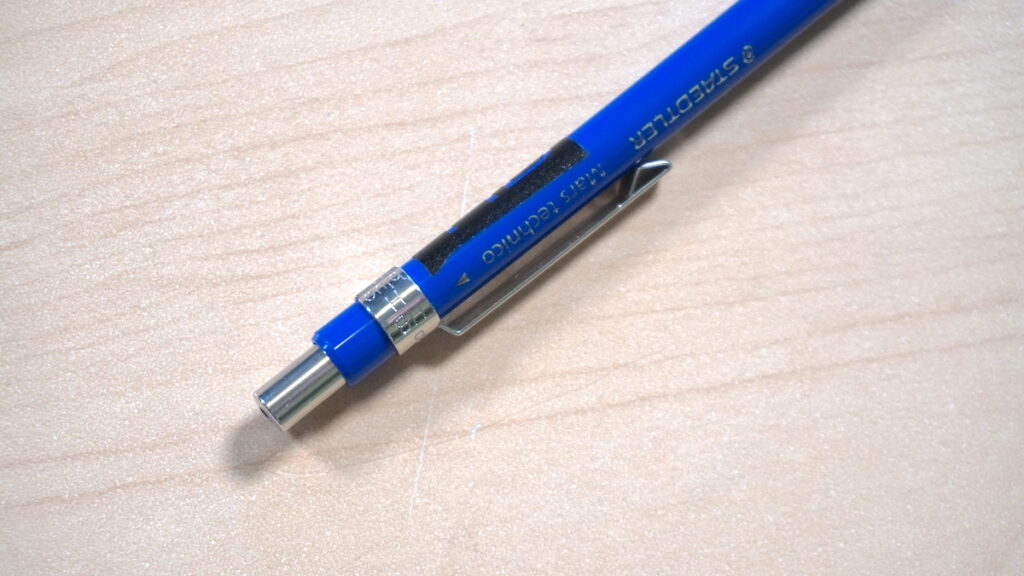This page contains affiliate links. As an Amazon Associate I earn from qualifying purchases. Read the full disclosure.
Clutch pencils are my favourite type of drawing pencils. For the longest time, I thought you essentially had two choices for graphite pencils: a typical wooden drawing pencil or a thin mechanical pencil. I’ve always liked using mechanical pencils because of the way they felt while drawing with them – they had a nice weight to them. But I was always frustrated because they were really only useful for contour drawings because you couldn’t really shade with them. And most annoyingly, the lead was alway breaking.
Enter in the clutch pencil! Also known as a lead holder, it looks just like a mechanical pencil except it holds much thicker leads. I use the Staedler Mars lead holders. There are quite a few reasons why I like using them, and just a couple cons that you might want to think about if you’re planning on trying them out.
Watch my video about clutch pencils on my YouTube channel.
The leads rarely break. I say rarely, but I actually haven’t had it happen yet. This is so refreshing compared to mechanical pencils which break over and over. I use the 2mm wide leads, which is why they are so much stronger when compared to the .5 mm leads I use in a typical mechanical pencil.
They’re available in various hardness grades. Right now, I have leads in 2B, HB and 2H. That gives me a nice range for my use, which is mostly preparatory sketches for paintings or linocuts. I also use them in my sketchbook for finished drawings.
The hardness grade labeling is sub-par. This will vary from brand to brand, but the Staedler Mars lead holders I have make it difficult to tell each pencil apart. Various hardness grades are engraved on the metal clip, which you turn to indicate which grade you’ve put into the clutch pencil. Unfortunately, it’s difficult to read, so I’ve had to make my own labels.

The pencils have a nice weight to them. There is a slightly weightier textured metal piece where you grip the pencil, while the barrel is a light plastic. This means it’s light to use and doesn’t feel like you’re keeping the pencil upright. I’ve noticed that issue with some heavier writing implements that are all-metal. My hand doesn’t tire using the clutch pencils.
They work very nicely for shading. Since the leads are so thick, you can hold them almost horizontal to your sheet of paper and build up shading. This is a huge plus over a mechanical pencil, and makes them very similar to a wooden pencil.
You need a special sharpener. I use a tool called a lead pointer, which is easy to use but bulky for taking it with you. I’ve seen versions of the Staedler Mars lead holders which have a built-in sharpener, but I don’t have that version. Learn more about how to sharpen a clutch pencil in my blog post about the Staedler Mars lead pointer.
The leads seem to last forever. I haven’t done any sort of empirical comparison of how long a typical wood drawing pencil lasts compared to the lead in a clutch pencil, but they seem to last a very long time. Maybe it’s because I’ll occasionally break the lead in a wood pencil while sharpening but haven’t had that happen yet with my clutch pencils.
They never get shorter. Because you sharpen the lead inside the holder, the pencil itself never gets shorter even if the lead is almost used up. I hate drawing with a super-short pencil so I really like this benefit.

They’re a bigger investment. The reality is you have to pay for a lead holder plus the pencil leads separately. And you might not be able to find single leads in the hardness grade you want, so you may need to buy packs of several leads. This can be quite pricey. Once you’ve made the investment, it’ll take a long time to go through all the leads, so over time, it’s not too expensive.
Buy your own
Pick up a clutch pencil at your local art supply store or on Amazon:
Canada clutch pencil




